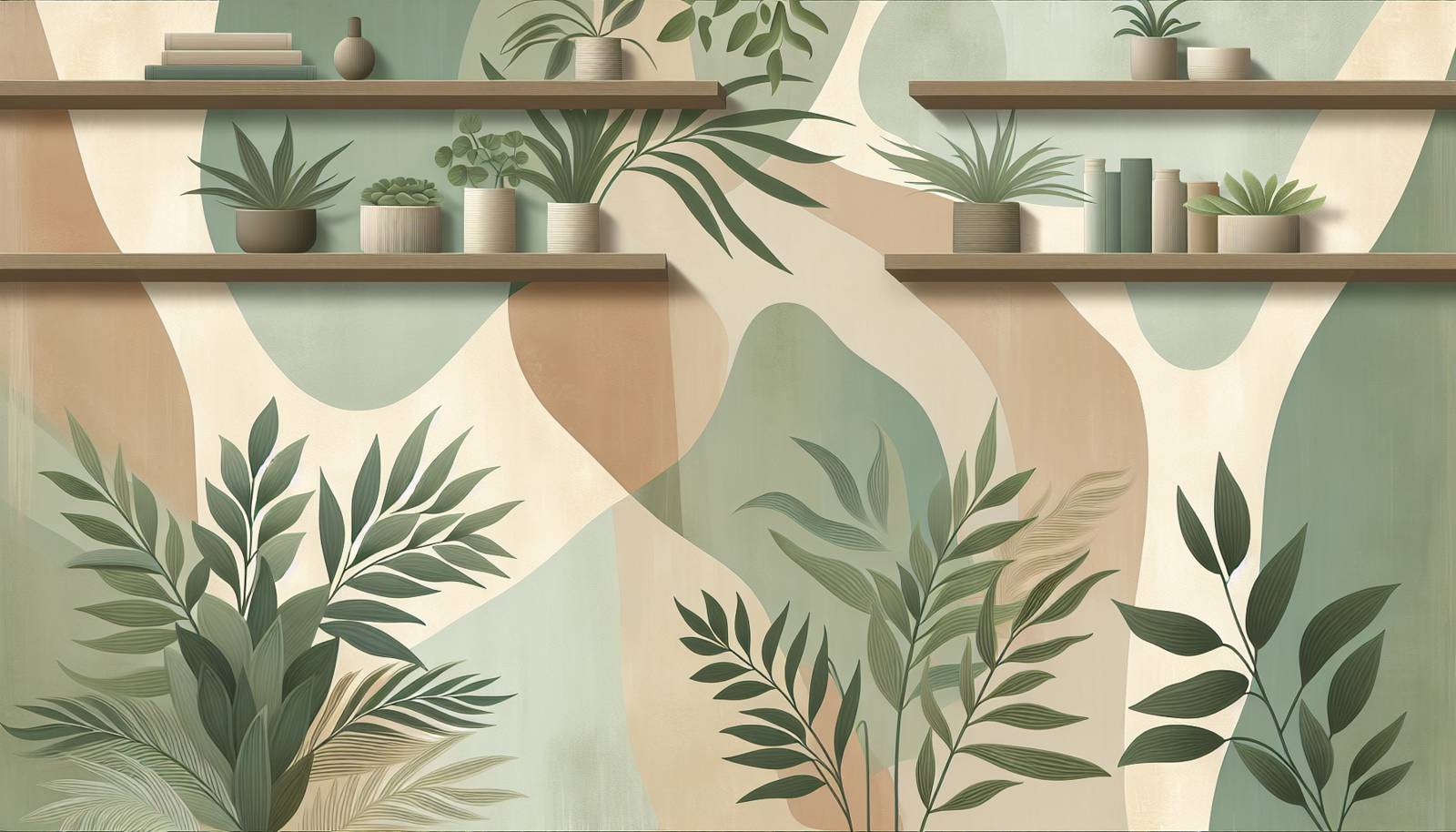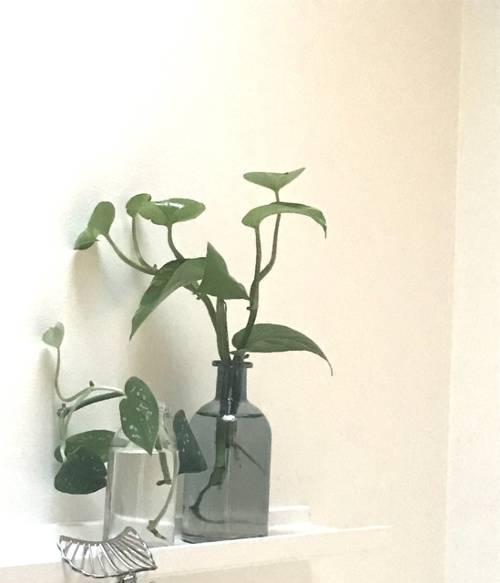
FAQ About Indoor Plant Shelf Styling Ideas

What are some basic tips for styling an indoor plant shelf?
To style an indoor plant shelf, start by selecting a variety of plant sizes and types to create visual interest. Use decorative pots and consider adding non-plant elements like books or small sculptures to enhance the aesthetic. Balancing colors, textures, and heights helps in creating a harmonious look. Be sure to consider the light requirements of the plants and position them accordingly.

How do I choose the right plants for an indoor plant shelf?
Choose plants based on the lighting conditions of the room where the shelf is placed. For lower light areas, consider using plants like pothos, snake plants, or ZZ plants. In brighter areas, you can use succulents or herbs. It’s important to consider the maintenance level you're comfortable with; some plants require more frequent watering and care than others.

What are some creative arrangement techniques for plant shelves?
Layering is a popular technique, where you place larger plants at the back of the shelf and smaller ones at the front. Group plants with similar care needs together. You can also arrange plants at varying heights using stands or stack books to create different levels. Aim for an asymmetrical arrangement to maintain visual interest.

How can I incorporate decorative elements into my plant shelf?
Incorporate decorative elements like vases, candles, or artwork to complement your plants. Use items that match or contrast with your plant pots to create a cohesive look. Mirrors can also help to reflect light and make the space feel larger. Choose elements that don't overshadow the plants but rather highlight them.

How can lighting affect my plant shelf styling?
Lighting dramatically affects both plant health and the visual appearance of a plant shelf. Ensure that your plants receive the proper amount of light, whether it's natural sunlight or artificial grow lights. Lighting can also be used to create a moody ambiance; spotlights or LED strips can highlight certain areas of the shelf.

What are some common mistakes to avoid when styling a plant shelf?
Avoid overcrowding the shelf, which can make it difficult for plants to thrive due to limited airflow. Using pots without drainage can also lead to overwatering problems. Another mistake is not considering the light needs of each plant, which can result in healthy plants quickly wilting.

How often should I water the plants on my plant shelf?
The frequency of watering depends on the plant species, pot size, and environmental conditions like humidity and temperature. Generally, it's important to check the soil moisture level; water when the top inch of soil feels dry. Some indoor environments may require watering once a week, while others might need it more or less frequently.

What are some low-maintenance plants suitable for indoor plant shelves?
Low-maintenance plants that are ideal for indoor shelves include snake plants, ZZ plants, pothos, and peace lilies. These plants are hardy and can tolerate a range of light conditions and infrequent watering. Succulents are also a great choice for those who prefer minimal upkeep.

Can I mix live and artificial plants on my shelf?
Yes, mixing live and artificial plants can create a fuller, more lush appearance while reducing maintenance. Ensure that artificial plants are of good quality to blend naturally with live plants. This approach can add volume and color where live plants might not thrive due to inadequate light or space.

How can I organize a small plant shelf without it looking cluttered?
To prevent clutter on a small plant shelf, opt for a few statement plants rather than many small ones. Use vertical space efficiently by stacking pots or using hanging plants. Adding tiered shelves can also maximize space while maintaining an organized look. Keep a consistent color scheme to create a tidy, cohesive appearance.

What are some seasonal ways to refresh an indoor plant shelf?
To refresh your plant shelf seasonally, change the pots or decorative accents to match the season’s colors and themes. Introduce seasonal plants or flowers, such as poinsettias for winter or daffodils for spring. You can also swap out decorative items for seasonal decorations, like miniature pumpkins or seashells.

How can I make my indoor plant shelf child or pet-safe?
Ensure safety by choosing non-toxic plants like spider plants, bamboo palms, or Boston ferns. Place plants out of reach on higher shelves or use wall-mounted shelves. Avoid using heavy or unstable pots that can easily be knocked over. Consider securing the shelf to the wall to prevent tipping.

What role does symmetry play in styling an indoor plant shelf?
Symmetry can create a balanced and orderly appearance on an indoor plant shelf. By placing matching plants or decor on either side of the shelf, you establish a sense of stability and harmony. However, asymmetrical arrangements are equally stylish and can lead to more dynamic and interesting displays. The choice between symmetry and asymmetry depends on personal preference and space requirements.

Are there specific styles or themes I can use for my plant shelf?
Various styles like minimalist, bohemian, rustic, or industrial can be applied to plant shelf styling. For a minimalist approach, focus on a few plants with clean lines and neutral colors. A bohemian style might include a larger variety of plants with colorful pots and woven elements. Your choice of style can reflect personal tastes and complement your existing home decor.

How can I use color to enhance my indoor plant shelf?
Using color effectively can enhance the visual appeal of your plant shelf. Coordinate the pot colors with room accents or choose complementary colors for contrast. Incorporate plants with colorful foliage, such as calatheas or crotons, to add vibrancy. Seasonal decorative elements can also bring varying hues into your display.

What are hanging plants and how can they be used on a plant shelf?
Hanging plants, such as trailing pothos or ivy, are plants that grow well in hanging positions, creating a cascading effect. They add vertical interest to a plant shelf and are ideal for utilizing upper areas without occupying shelf space. Hanging plants can be used to draw the eye upward and create depth within your plant arrangement.

How can I decorate a plant shelf in a sunny room?
In a sunny room, choose sun-loving plants such as succulents, cacti, and herbs. Use reflective surfaces or light-colored pots to enhance the natural brightness. Consider adding sheer curtains to diffuse the light if it's too intense, which can help prevent leaf burn while maintaining a bright environment.

What types of shelves are best for displaying plants?
Floating shelves, tiered shelves, and corner shelves are popular choices for displaying plants. Floating shelves offer a sleek, modern look, while tiered shelves allow for more plants at different heights. Corner shelves are ideal for maximizing space in small rooms. Ensure the shelf material is durable enough to support the weight of the plants and soil.

How do I ensure proper ventilation for plants on a shelf?
Ensure proper ventilation by not overcrowding the shelf and allowing space between pots for air circulation. This helps to prevent mold and fungal growth. If necessary, use fans or open windows periodically to promote air movement. Regularly rotating the plants can also aid in even air exposure and prevent stagnant conditions.

How can I use vertical space effectively in my plant shelf design?
Utilizing vertical space can transform your plant shelf into a dynamic display. Use taller plants at the back and smaller, bushier ones in front. Introduce hanging planters or trailing vines to add vertical interest. Installing multiple shelves at varying heights can also create layers and accommodate a wider variety of plants.
